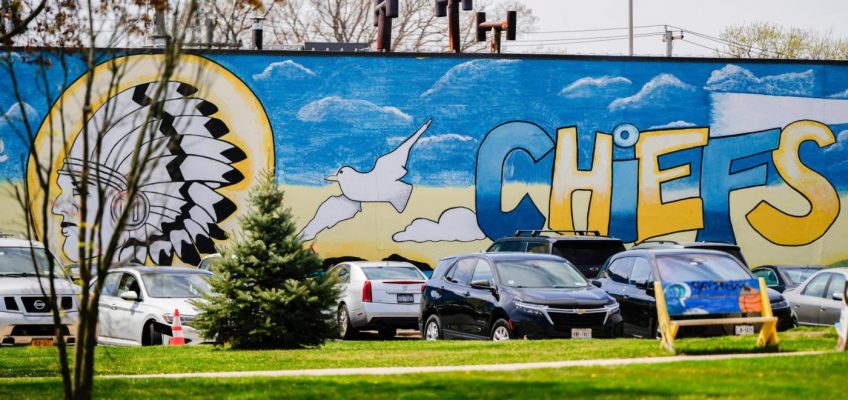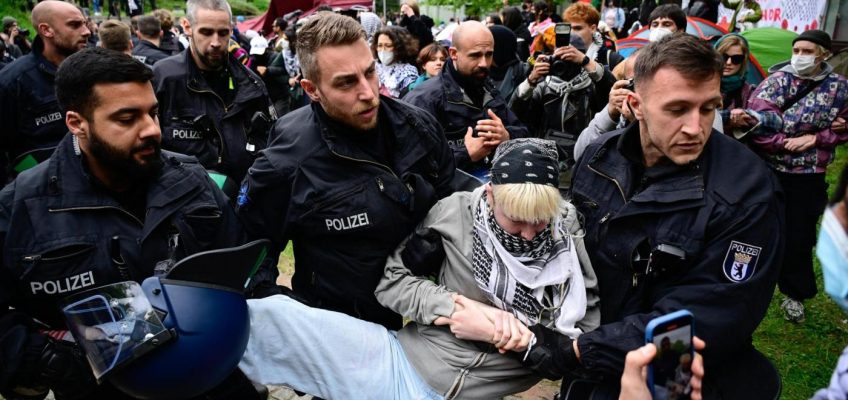By PHILIP MARCELO
MASSAPEQUA, N.Y. (AP) — As a high school hockey player, Adam Drexler wore his Massapequa Chiefs jersey with pride.
But as the Chickasaw Nation member grew up and learned about his Indigenous roots, he came to see the school’s mascot — a stereotypical Native American man wearing a headdress — as problematic.
Now his Long Island hometown has become the latest flashpoint in the enduring debate over the place of Indigenous imagery in American sports: The Trump administration launched an investigation Friday into whether New York officials are discriminating against Massapequa by threatening to withhold funding. The town has refused to comply with a state mandate to retire Native American sports names and mascots.
“There was no tribe east of the Mississippi that ever wore a headdress — ever,” said Drexler, 60, who was adopted and raised by a white Jewish family. “How can you argue for a symbol that has no significance or relevance here, while at the same time claiming you honor and respect the culture and history of the people this town is named after?”
It’s hard to miss the Native American imagery around Massapequa, a coastal hamlet 40 miles (64 kilometers) east of Manhattan where roughly 90% of the residents are white.
The Chiefs logo is prominently featured on signs adorning school, police and fire department buildings. Students in recent years even painted a colorful mural with the logo and team name on a commercial building next to the high school in protest of change to the mascot.
A few minutes drive away, next to the town’s post office, a statue of a Native American figure wearing a flowing headdress towers over those depicting a buffalo, a horse and a totem pole.
“When you think of Massapequa, you think of the Chiefs,” said Forrest Bennett, a 15-year-old high school sophomore.
A town at odds with state policy
New York has been trying to rid schools of Native American mascots going back more than two decades to the administration of Republican Gov. George Pataki, and in 2022 gave districts until the end of the school year to commit to replacing them.
Massapequa was among four school districts on Long Island that filed a federal suit challenging the ban, arguing their choice of team names and mascots were protected by the First Amendment, but a judge dismissed the case last month.
Related Articles
Trump administration cuts $1 billion in school mental health grants, citing conflict of priorities
Trump administration retreats from 100% withholding on Social Security clawbacks
About that hug … Whitmer risks backlash from Democrats as she embraces Trump in Michigan
Weak GDP report tied to tariffs has Trump trying to blame Biden on the state of the economy
Immigrants who came to the Texas Panhandle to work legally have been told they must leave
Districts could seek exemption from the state mandates if they gained approval from a Native American tribe, but state officials say Massapequa instead “stayed silent” for years.
A spokesperson for the school board said Wednesday that it intends to appeal the judge’s ruling. The board also lauded the investigation by the federal education agency, which President Donald Trump has moved to dismantle in recent weeks.
Trump, for his part, has made frequent visits to Long Island in recent years as the suburban region has shifted Republican. Last spring, he visited Massapequa to attend the wake of a New York City police officer.
“Forcing them to change the name, after all of these years, is ridiculous and, in actuality, an affront to our great Indian population,” Trump wrote in a recent social media post. Days later he posed with a Massapequa Chiefs sweater in the Oval Office. “I don’t see the Kansas City Chiefs changing their name anytime soon!”
The NFL’s Chiefs have stuck with their name despite years of protest from some Native American activists. Five years ago, the team barred fans from wearing headdresses or face paint referencing Native American culture.
Meanwhile other professional teams, including football’s Washington Redskins ( now Commanders ) and baseball’s Cleveland Indians ( now Guardians ), have adopted new monikers and logos.
Residents say mascot ‘honors’ Native Americans
Along the eateries and shops next to Massapequa High, students and parents insisted the team name and mascot are meant to honor the Massapequa, who were part of the broader Lenape, or Delaware people who inhabited the woodlands of the Northeastern U.S. and Canada for thousands of years before being decimated by European colonization.
“It’s not that we’re trying to do anything disrespectful,” said Christina Zabbatino, a mother of two. “Actually, I would be honored if it was my face, you know what I mean?”
Lucas Rumberg, a 15-year-old sophomore, shrugged off criticism that the school logo reflects the traditional garb of a Midwest tribe and not the attire worn by the Lenape people eventually forced to move farther and farther west by colonial settlers and then American government forces as the nation expanded.
“Even though it’s not necessarily what they look like here, I feel like it still conveys that we are respectful of Native Americans,” Rumberg said. “I get that people might be offended by it, but I just feel that it’s been here so long that it should stay.”
Native Americans say mascot is dehumanizing
But that dismissive attitude is precisely why stereotypical mascots are offensive, argues Joseph Pierce, director of Native American and Indigenous studies at Stony Brook University, also on Long Island.
“It is as if this image were a shorthand for any and all Indians,” the Cherokee Nation citizen said. “And that reduces us to a type, rather than portray us as distinct peoples.”
Indian mascots also contribute to the view that Native peoples are relics of the past, and not living communities facing urgent threats today, says Joey Fambrini, a member of the Delaware Tribe of Indians who works for the New York Indian Council, a nonprofit providing health care to Native Americans.
“That dehumanization isn’t harmless: It directly contributes to why our struggles are ignored or minimized,” the 29-year-old Brooklyn resident said, noting that tribal communities endure high rates of poverty, inadequate housing, lack of clean water and limited education access, among other challenges.
The cheerful mascot also obscures Massapequa’s grim legacy of violence against Native Americans, says John Kane, a member of the Mohawk tribe of upstate New York who has pushed districts across the state for years to change their names and mascots.
The town, after all, was the site of a massacre in which scores of Native men, women and children were killed by Europeans in the 1600s, he said.
“They’re not trying to honor us. That’s why accuracy of the logo doesn’t matter to them,” Kane said. “So the idea that this is some sort of honor to us? I mean, come on. It’s an absurd proposition to even suggest.”




